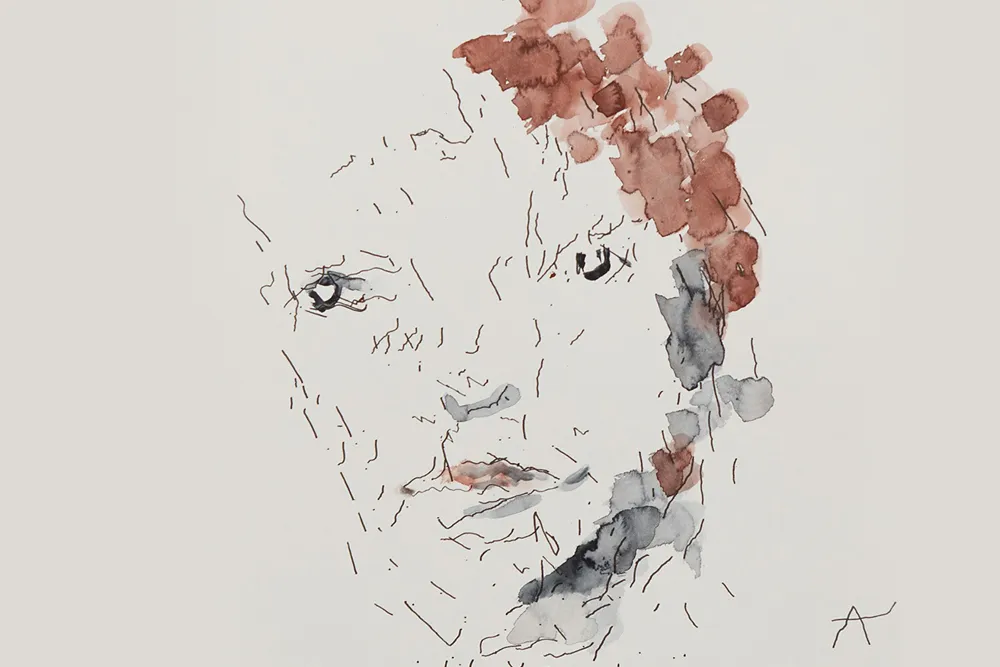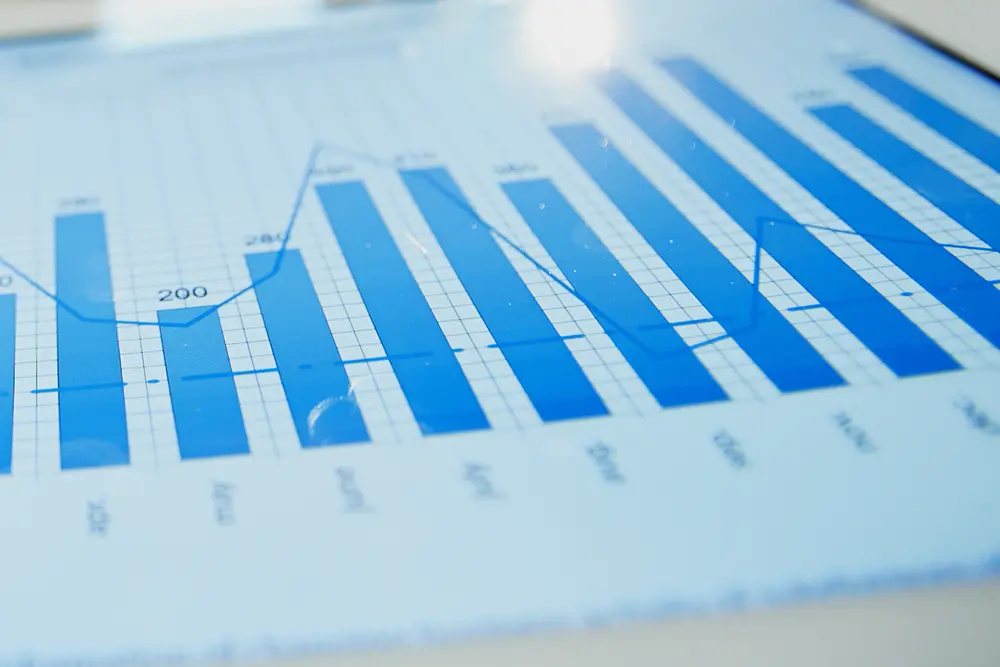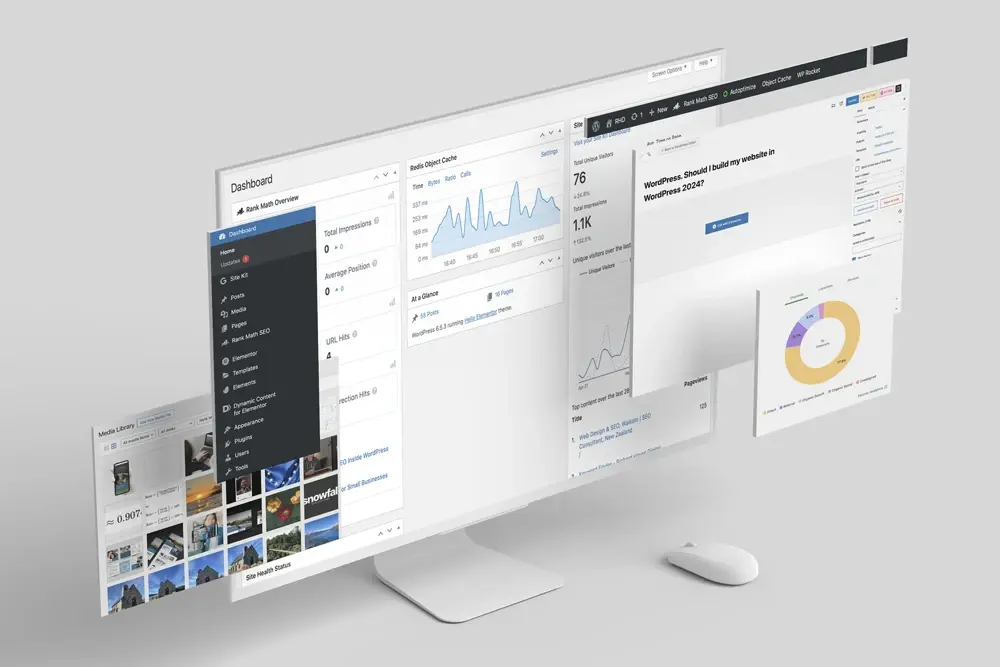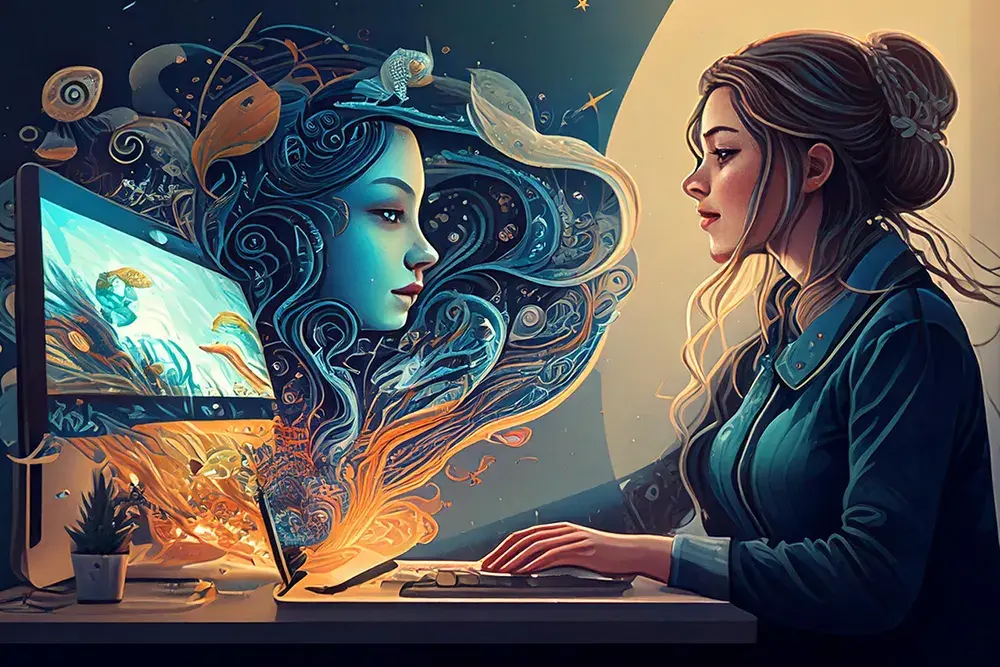Does art really require imagination?
Or is it more about the skill involved in the creation? And if imagination is a uniquely human trait, can AI robot artists ever possess it? Imagination is often seen as inherently human. It allows us to think beyond the visible, dream, connect seemingly unrelated ideas, and express them in ways that resonate with others.
We as humans can create mental images or concepts that don’t yet exist, a “what if” engine that lets us go beyond reality and experiment in the mind’s eye.
Many would argue that AI hits a wall here.
Whether we value imagination or skill more highly in art, the rise of AI robot artists like Ai-Da forces us to confront our assumptions and expand our definitions.

Introducing Ai-Da, an AI robot artist
Ai-Da is an AI robot designed to create art. She’s far more than a robotic paintbrush. With AI algorithms and cameras embedded in her eyes, Ai-Da can see, process, and interpret visual information, allowing her robotic arms to sketch, paint, and sculpt. In essence, she has the technical capability to turn her observations into works that resemble those of a human artist.
However, Ai-Da’s creative process differs significantly from that of a human. Her art is generated based on the data she’s given, her visual inputs, and the algorithms that guide her interpretation. Unlike a human artist, Ai-Da doesn’t imagine or feel; she simply processes and translates information without intending to innovate or express something personal.
Yet, despite her lack of imagination, Ai-Da’s art is strikingly original and thought-provoking. Her work raises an intriguing question: Does art truly require imagination, or is the act of creation, regardless of intent, enough to provoke meaning?
Skill vs. Imagination, can AI outperform humans?
Let’s shift our definition of art from imagination to skill. Creating art has a technical side, requiring practice, technique, and precision. If we consider art-making purely a craft, AI has the potential to surpass humans.
Ai-Da’s robotic arm can make flawless brushstrokes, sketch perfectly straight lines, and work with mathematical precision that even the most skilled human artist could struggle to match.
It’s now easy to see how AI could create artwork that exceeds human capabilities. Ai-Da and other AI robot artists don’t tire, don’t make “mistakes” (unless programmed to), and don’t suffer from the human body’s limitations.
AI can combine different styles, experiment with colours, and mimic the masters without needing to “learn” the way humans do. Some might even argue that this technical skill alone qualifies as art. After all, some of the world’s most respected art, like photorealism, is celebrated as much for its technical mastery as its emotional depth.
Can AI have an imagination?
Can AI be creative, or does it only recombine existing knowledge in new ways? Some would say that’s how humans learn when we are young, reprocessing information.
Like Ai-Da’s, AI is designed to mimic certain aspects of human imagination but lacks the conscious experience that comes with genuine imagination. Instead, it’s a product of algorithms analysing patterns and responding to input.
While AI can generate ideas that seem innovative, these ideas aren’t born out of curiosity, wonder, or emotion.
Imagine a future where AI systems are programmed to “learn” in more dynamic and less structured ways, breaking away from their data-driven roots to explore concepts without human-defined boundaries.
In this scenario, could AI develop a form of imagination? Some scientists believe that by creating neural networks that mimic the human brain, we’re on a path toward giving AI something close to the imagination, a machine learning to improvise, create without strict instructions and experiment for experimentation’s sake.
AI would still differ from human imagination
Personal experiences, emotions, and perceptions unique to each person shape human imagination. AI, at least in its current form, doesn’t experience joy, fear, nostalgia, or inspiration. Its creativity is mathematical rather than emotional.
A New Domain for Art?
As we examine the growing field of AI robot artists, it becomes clear that the boundaries of art are expanding. Perhaps we need to see AI art not as “better” or “worse” than human art but as something entirely different.
Ai-Da represents a new kind of artist who combines technical skills with machine learning to produce something unique. And maybe that’s the beauty of it. By broadening our definition of art, we’re allowing for new interpretations, fresh perspectives, and a deeper understanding of creativity.
In doing so, we may see art and humanity in an entirely new light.






